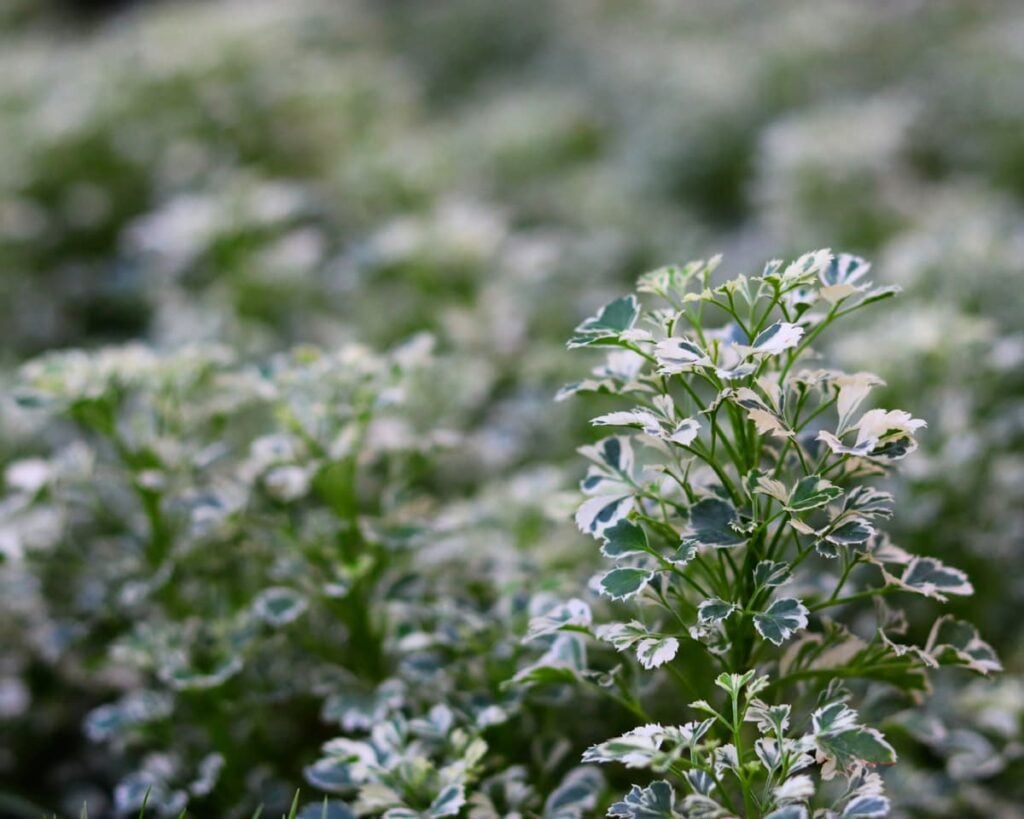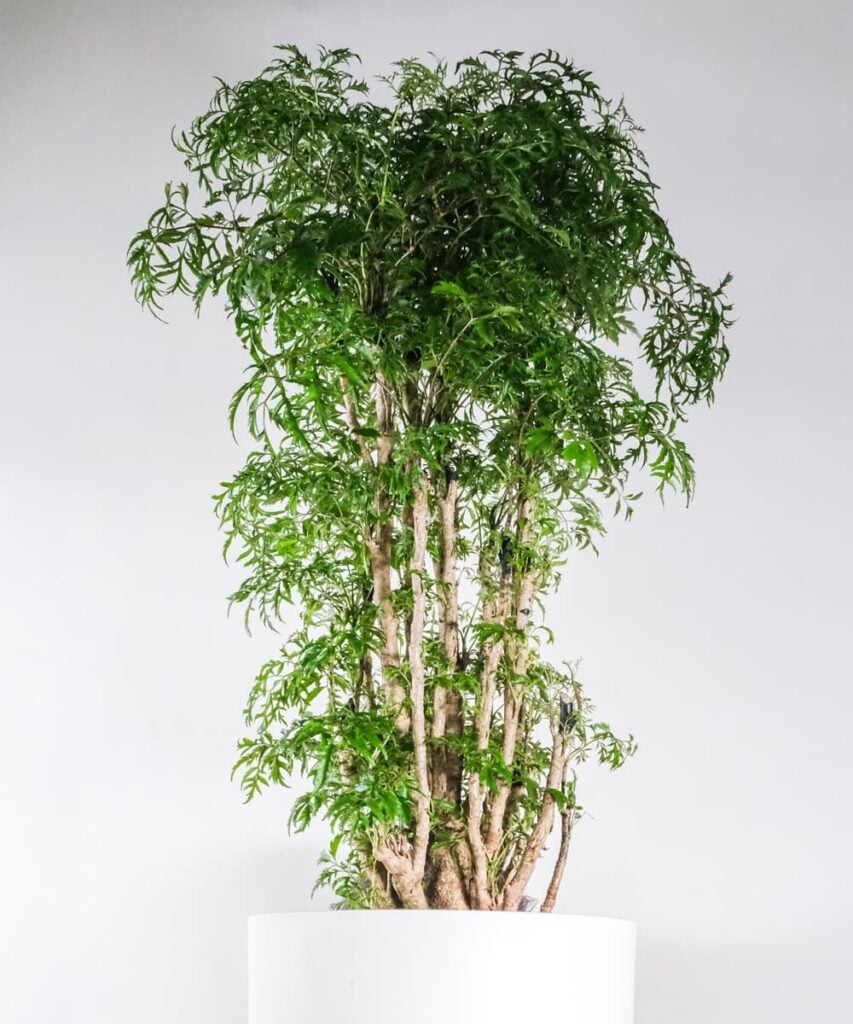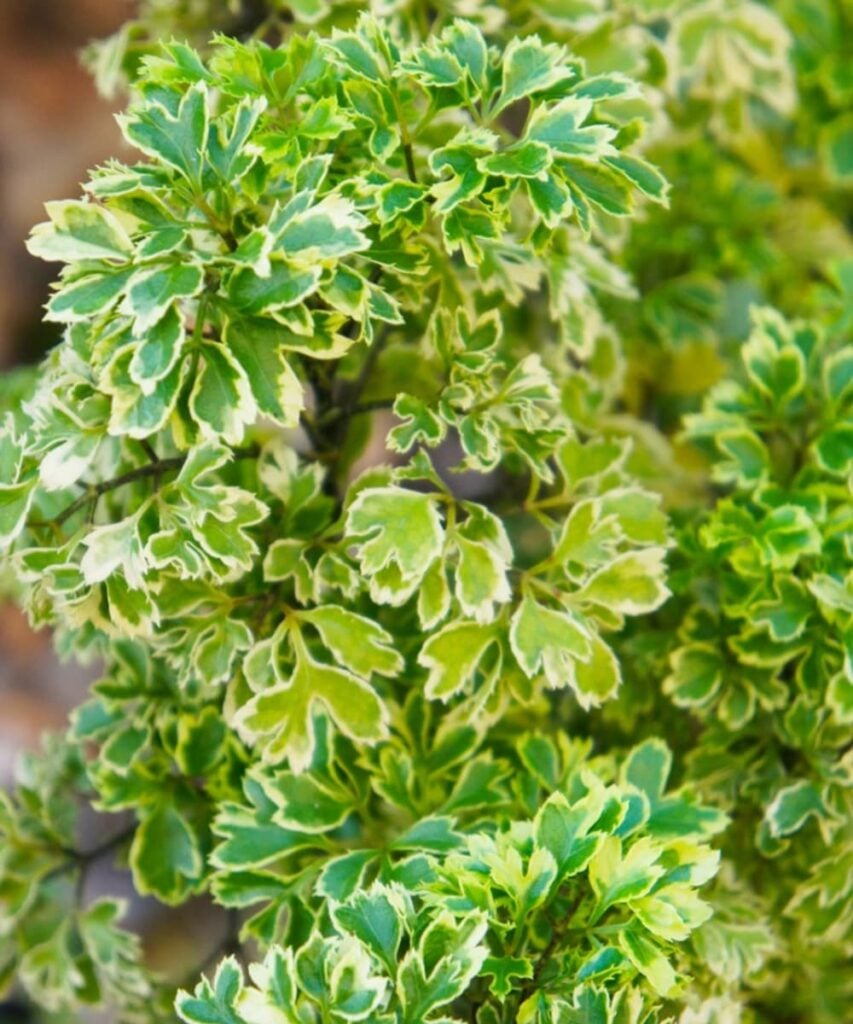Everything You Need to Know about Polyscias Care

Polyscias, commonly known as Aralia, is an exotic houseplant native to India and Polynesia. The plant has fluffy and bright green foliage. Its ferny, feathery leaves droop from graceful narrow branches that grow straight up, forming a many-layered, complex plant.
Polyscias Care
The key to keeping aralia happy lies in mimicking its native tropical environment. Aralia plants also come and go in popularity but always make wonderful large office plants and are suitable as house plants if their size is controlled with regular pruning. Let’s discus Polyscias care in details.
Light
Aralia thrives well in bright, indirect light and can handle light shade. Aralia plants enjoy morning sun. Avoid full sun for indoor plants. If kept outdoors during the warmer months, most Polyscias do well in partial shade to full sun. Aim for about six to 8 hours of filtered light a day; it is said that aralia plants do especially well in North-facing light.
Soil
The tropical Aralia plant grows best in well-drained, loamy, rich, acidic potting mix. A standard potting mix with some additional perlite added works well for container grown plants. While the specific blend of soil can vary (from sandy to peat moss to loamy), drainage should be the priority. Choose a pot made of clay or terracotta to help wick extra moisture from the soil and act as an added defence against root rot.
Water
One of the most vital parts of Polyscias Care is to keep an eye on the water requirement. They like it moist but never saturated. Water the soil deeply and allow it to almost dry out before you water it again—a weekly session should do the trick. Additionally, you can decrease your watering cadence in the winter, watering your plant every other week instead. Do not allow the plant to stand in water, and do not allow the soil to become completely dry.

Temperature and Humidity
Temperature and humidity also play a very important role in Aralia’s growth. In order for your plant to thrive, you will want to ensure temperatures in your home maintain a balmy baseline. Aralia can happily handle warmer temperatures (it does beside between 18 to 29 degrees Celsius), but anything below 15 degrees will cause your plant to fail and shed its foliage.
Tropical Aralia plants enjoy high humidity, so it’s a good idea to set your container on a pebble tray to keep the ambient moisture levels high.
Fertilizer
Feed your aralia with a liquid fertilizer monthly throughout its growing period (spring through fall). If you notice falling leaves or those that are yellowish-green in appearance, that’s a good indication that your plant isn’t getting enough nutrients and could benefit from a bit of fertilizer.

Common Problems
- Symptom: Root rot
Cause: Over-watering/water logging. - Symptom: Dropping leaves
Cause: Underwatering/overwatering/low humidity. - Symptom: Yellow leaves
Cause: Over-watering/improper drainage. - Symptom: Browning leaves
Cause: Lack of enough light.
Though Aralias may be slow starters, once they have made it through their first year, they tend to pick up speed and grow quite enthusiastically. Aralia grows slowly but can eventually reach over 6 feet in height with the proper care. If you’re seasoned at taking care of a variety of houseplants, you should have no problem caring for aralia. While the shrub has picked up a reputation for being picky over the years, it really is no fussier than any other bit of greenery you’ve cared for.
Not only does Aralia make for a beautiful houseplant, but it boasts some perks of its own, too. It can be grown as a bonsai and used to symbolize peace, harmony, and balance. Some also acts as a great air purifier in your home and has the ability to remove dangerous VOCs from your indoor environment.
Polyscias care reference: TheSpruce
